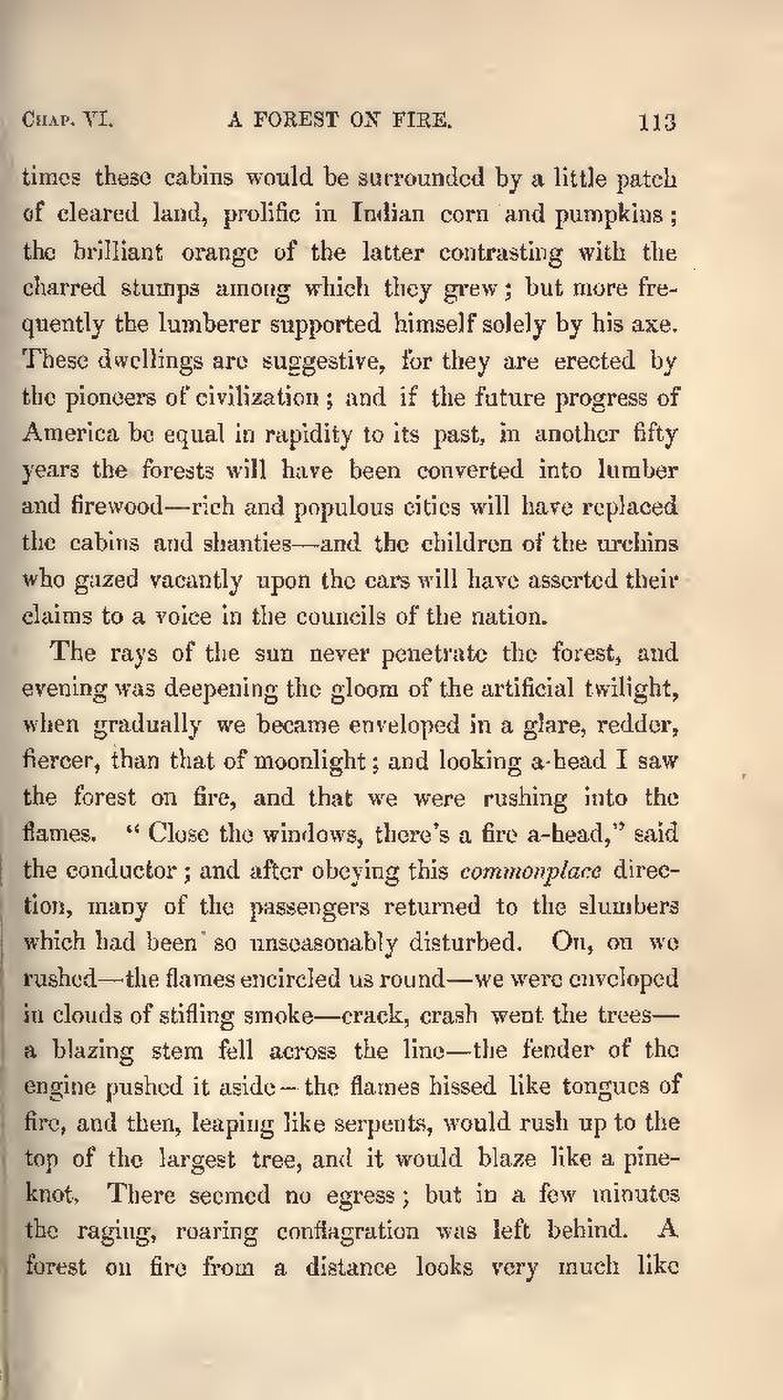times these cabins would be surrounded by a little patch of cleared land, prolific in Indian corn and pumpkins; the brilliant orange of the latter contrasting with the charred stumps among which they grew; but more frequently the lumberer supported himself solely by his axe. These dwellings are suggestive, for they are erected by the pioneers of civilization; and if the future progress of America be equal in rapidity to its past, in another fifty years the forests will have been converted into lumber and firewood—rich and populous cities will have replaced the cabins and shanties—and the children of the urchins who gazed vacantly upon the cars will have asserted their claims to a voice in the councils of the nation.
The rays of the sun never penetrate the forest, and evening was deepening the gloom of the artificial twilight, when gradually we became enveloped in a glare, redder, fiercer, than that of moonlight; and looking a-head I saw the forest on fire, and that we were rushing into the flames. "Close the windows, there's a fire a-head," said the conductor; and after obeying this commonplace direction, many of the passengers returned to the slumbers which had been so unseasonably disturbed. On, on we rushed—the flames encircled us round—we were enveloped in clouds of stifling smoke—crack, crash went the trees—a blazing stem fell across the line—the fender of the engine pushed it aside—the flames hissed like tongues of fire, and then, leaping like serpents, would rush up to the top of the largest tree, and it would blaze like a pine-knot. There seemed no egress; but in a few minutes the raging, roaring conflagration was left behind. A forest on fire from a distance looks very much like
